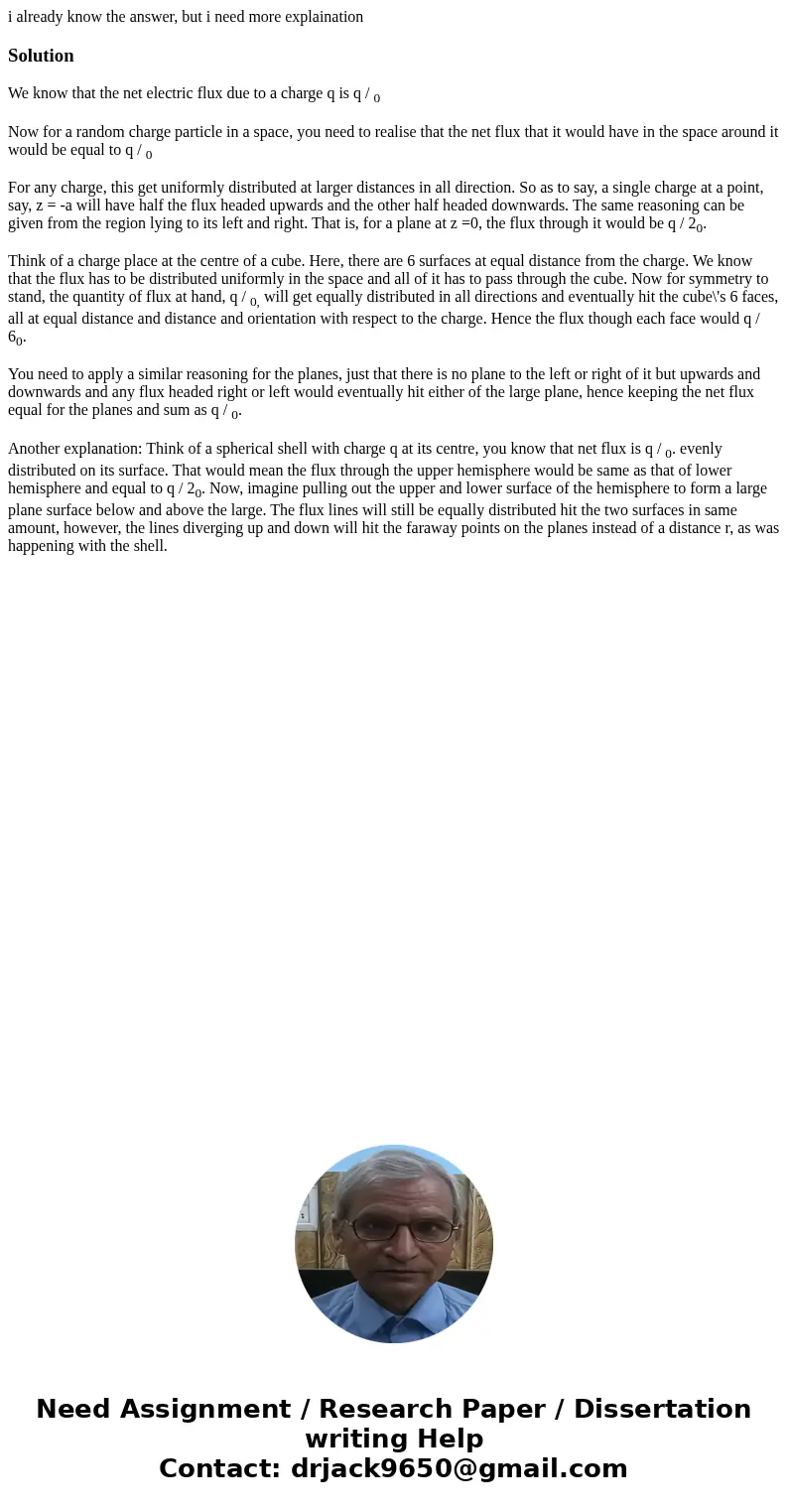i already know the answer but i need more explainationSoluti
i already know the answer, but i need more explaination
Solution
We know that the net electric flux due to a charge q is q / 0
Now for a random charge particle in a space, you need to realise that the net flux that it would have in the space around it would be equal to q / 0
For any charge, this get uniformly distributed at larger distances in all direction. So as to say, a single charge at a point, say, z = -a will have half the flux headed upwards and the other half headed downwards. The same reasoning can be given from the region lying to its left and right. That is, for a plane at z =0, the flux through it would be q / 20.
Think of a charge place at the centre of a cube. Here, there are 6 surfaces at equal distance from the charge. We know that the flux has to be distributed uniformly in the space and all of it has to pass through the cube. Now for symmetry to stand, the quantity of flux at hand, q / 0, will get equally distributed in all directions and eventually hit the cube\'s 6 faces, all at equal distance and distance and orientation with respect to the charge. Hence the flux though each face would q / 60.
You need to apply a similar reasoning for the planes, just that there is no plane to the left or right of it but upwards and downwards and any flux headed right or left would eventually hit either of the large plane, hence keeping the net flux equal for the planes and sum as q / 0.
Another explanation: Think of a spherical shell with charge q at its centre, you know that net flux is q / 0. evenly distributed on its surface. That would mean the flux through the upper hemisphere would be same as that of lower hemisphere and equal to q / 20. Now, imagine pulling out the upper and lower surface of the hemisphere to form a large plane surface below and above the large. The flux lines will still be equally distributed hit the two surfaces in same amount, however, the lines diverging up and down will hit the faraway points on the planes instead of a distance r, as was happening with the shell.

 Homework Sourse
Homework Sourse